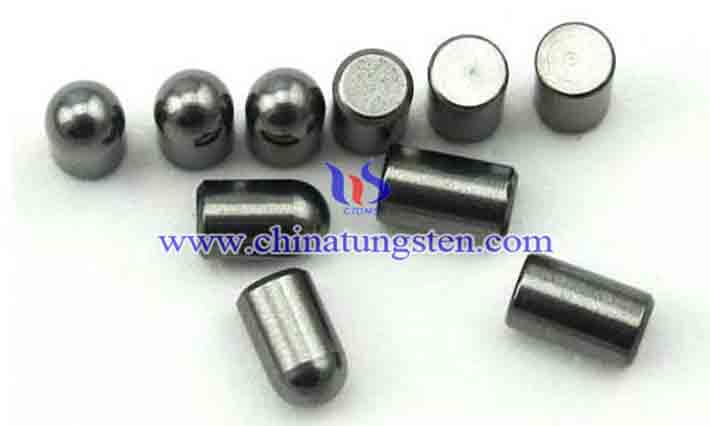Defect of Tungsten Carbide Button Tip
- Details
- Category: Tungsten Information
- Published on Wednesday, 08 August 2018 16:52
Tungsten carbide buttons tip were first applied to cone bits and then to DTH bits. The history of button bit in China starts from the cone bits in large diameter and DTH bits.

The current round-headed tungsten carbide buttons own the following defects.
Easily Worn:
The button is easily worn in the highly abrasive rock. According to the statistics of the discarded bits, the button of which diameter is 9mm and height of open head is 4mm wastes 75% unworn height. Its diameter is 7mm and the height of the open head has gone down to 3mm. The blunt table diameter of the head quickly exceeds the 2/3 diameter of the buttons. This shows that the speed of the increase of the diameter is faster than that of the wear of head height. It is easily worn out. The resistance reflected by rock is high, and drilling speed decreases to the minimum. As a result, the button has been discarded.
Sharp decrease of drilling speed
The pressure ratio of contact surface between button and rock decreases owing to the large diameter. Especially when the rock is hard or impact energy is not enough, the drilling speed will decrease. When the amplitude of stress wave decreases, the pressure ratio of contact surface between the round-headed button and the rock will also decrease. The stress wave is not effectively utilized, and the utilization of impact energy is reduced so that the raw material has been wasted.
The bottom of button is flat. When inserting the button, the air in the pore cannot be well discharged which generates air cushion. The button cannot be fixed steadily in the bottom. If the bottom is in a concave shape, it won’t generate the air cushion during the button inserting and save the alloy.
Though the tungsten carbide button is solid, it is easily worn and the drilling speed decreases quickly. In addition, the consumption of power is high and the large amount of materials are wasted.
- Tungsten Carbide Manufacturer & Supplier, Chinatungsten Online: tungsten-carbide.com.cn
- Tungsten News & Prices of China Tungsten Industry Association: www.ctia.com.cn
- Molybdenum News & Price: news.molybdenum.com.cn
- Tel.: 86 592 5129696; Fax: 86 592 5129797; Email: sales@chinatungsten.com



 sales@chinatungsten.com
sales@chinatungsten.com